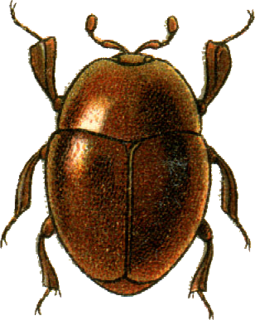
The Encyclopedia of Life (EOL) is a free, online collaborative encyclopedia intended to document all of the 1.9 million living species known to science. It is compiled from existing databases and from contributions by experts and non-experts throughout the world. It aims to build one "infinitely expandable" page for each species, including video, sound, images, graphics, as well as text. In addition, the Encyclopedia incorporates content from the Biodiversity Heritage Library, which digitizes millions of pages of printed literature from the world's major natural history libraries. The project was initially backed by a US$50 million funding commitment, led by the MacArthur Foundation and the Sloan Foundation, who provided US$20 million and US$5 million, respectively. The additional US$25 million came from five cornerstone institutions—the Field Museum, Harvard University, the Marine Biological Laboratory, the Missouri Botanical Garden, and the Smithsonian Institution. The project was initially led by Jim Edwards and the development team by David Patterson. Today, participating institutions and individual donors continue to support EOL through financial contributions.

iNaturalist is a citizen science project and online social network of naturalists, citizen scientists, and biologists built on the concept of mapping and sharing observations of biodiversity across the globe. iNaturalist may be accessed via its website or from its mobile applications. Observations recorded with iNaturalist provide valuable open data to scientific research projects, conservation agencies, other organizations, and the public. The project has been called "a standard-bearer for natural history mobile applications."

Ellychnia is a genus of fireflies. First defined by Émile Blanchard in 1845, the genus contains 24 species, which are widespread in the United States. Adults are black, with rose-colored marks on the pronotum; sexual dimorphism is unknown. These beetles are active during the day, and have no light-producing organs as adults; instead, they attract mates using chemical signals. The larvae of Ellychnia fireflies live in rotting logs.
Ellychnia hatchi is a species of firefly in the genus Ellychnia.

Dendrophilinae is a subfamily of clown beetles in the family Histeridae. There are more than 30 genera and 490 described species in Dendrophilinae.
Bacanius globulinus is a species of clown beetle in the family Histeridae. It is found in North America.
Bacanius is a genus of clown beetles in the family Histeridae. There are more than 70 described species in Bacanius.

Bacaniini is a tribe of clown beetles in the family Histeridae. There are about 16 genera and more than 170 described species in Bacaniini.
Scelolyperus is a genus of skeletonizing leaf beetles in the family Chrysomelidae. There are more than 20 described species in Scelolyperus. They are found in North America, Mexico, and the Palaearctic.
Cultellunguis is a genus of soldier beetles in the family Cantharidae. There are about nine described species in Cultellunguis.
Berosus hatchi is a species of water scavenger beetle in the family Hydrophilidae. It is found in North America.
Dytiscus hatchi is a species of predaceous diving beetle in the family Dytiscidae. It is found in North America.
Bacanius punctiformis is a species of clown beetle in the family Histeridae. It is found in North America.
Bacanius tantillus is a species of clown beetle in the family Histeridae. It is found in North America.
Podabrus cavicollis is a species of soldier beetle in the family Cantharidae. It is found in North America.
Bacanius acuminatus is a species of clown beetle in the family Histeridae. It is found in North America.
Eunica tatila, the Florida purplewing, is a species of tropical brushfoot in the butterfly family Nymphalidae. It is found in North America.
Opiona is a genus of millipedes in the family Caseyidae. There are about 16 described species in Opiona.
Cicindela purpurea, known generally as the purple tiger beetle or cow path tiger beetle, is a species of flashy tiger beetle in the family Carabidae. It is found in North America.

RobiHachi (ロビハチ) is a 12-episode Japanese anime television series produced by Studio Comet. The series aired from April 8 to June 24, 2019. The storyline is futurist but alludes to the story of Tōkaidōchū Hizakurige. The comically silly and purposely lame Hizakuriger robot makes its appearance, a reimagining of the long forgotten 1970s era robot anime Chōgattai Majutsu Robo Ginguiser.







